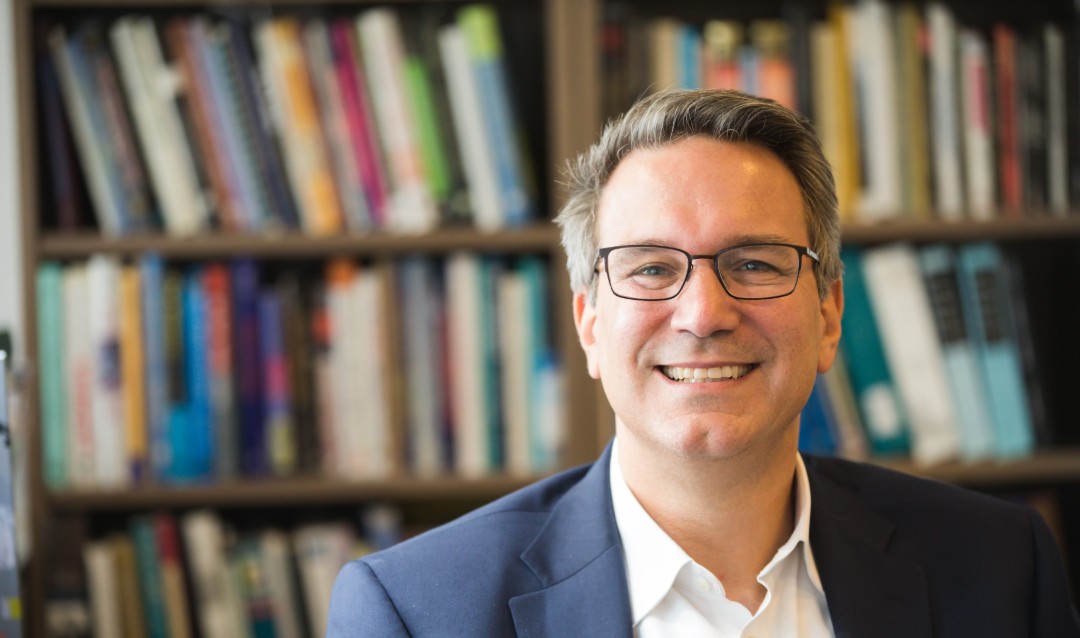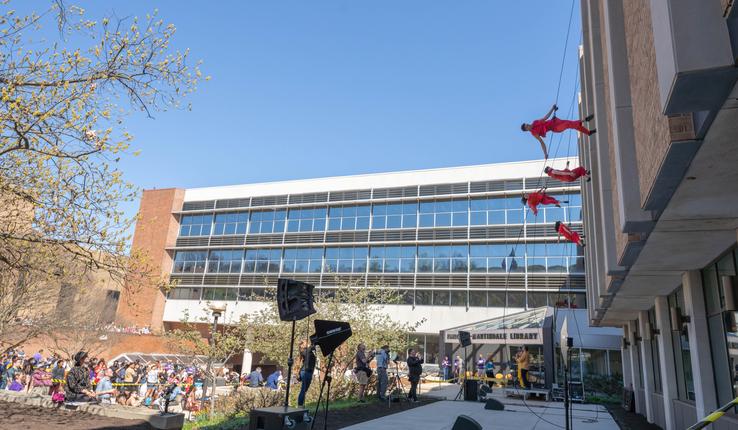Two months ago, Lehigh faculty and students were thrust into a situation the likes of which the university had never seen.
With concerns growing about the spread of COVID-19, President John D. Simon made the decision on March 12 to move all of the university’s courses online for the remainder of the semester. The decision meant that the university would need to move with lightning speed to move more than 1,000 classes, from four different colleges and myriad different fields, completely online.
It was no small task, but Greg Reihman, Lehigh's vice provost for Library and Technology Services, says Lehigh was more prepared than most universities for the unexpected transition. And though this semester has had its inevitable ups and downs as the university community adjusted to the new reality in higher education, he also says he’s been impressed with the quality of the work Lehigh faculty have done on behalf of their students.
“Everybody really stepped up and a lot of people did an amazing amount of work over a short period of time to make this work,” Reihman says. “The faculty were asking good questions, doing their best for their students, and after that initial transition, what we saw that was that some of our faculty were doing pretty amazing things.”
"The potential of technology to empower faculty to enhance student learning has been discussed in higher education for years,” added Simon. “This past semester has demonstrated that while we prefer to engage students in person, Lehigh faculty clearly can deliver on the promise of technology-enhanced education for our students."
Now, seizing on the learnings and successes of the past few months, Lehigh’s academic leadership is pushing forward on several different fronts to prepare for the potentiality that remote teaching may need to remain in place, either in part or in full, come fall. The university has announced it intends to update the campus about plans for the fall semester in mid June.
Should an extension of remote teaching become necessary, Reihman says, the goal will be clear and simple: to build and deliver a dynamic and interactive learning environment, and to demonstrate leadership in using innovative technology to deliver the highest quality education.
“All of our efforts now are about raising the floor and raising the ceiling,” Reihman says. “A key thing for us as a baseline is to step it up in regard to a couple of simple things that can be fixed, because some faculty may not realize how a few small changes can make a significant difference in terms of the learning experience for our students. And I do think that those few relatively small things will make a big difference.”
“And then on the other end of the spectrum, you have some people who were dedicating an amazing amount of time to figure out how to do this, and do it at a really high level,” he says. “We want to highlight those successes and use them to help other faculty reach the same level.”
A Steadfast Effort
Along with serving his role as vice provost and head of LTS, Reihman is also a member of the faculty; this spring, he taught the course, “Philosophy & Technology.” The experience was eye-opening, and served as another layer of learning for Reihman as he works with colleagues across the university to prepare faculty for next-level teaching in the fall.
“The things you have typically done as an instructor sometimes just don’t work as well in this format,” Reihman says. “You can't just ask the students a question and expect any kind of coordinated response. You need to be much more structured, and there are ways you can do that—you can put students into smaller groups, for instance, and then have one person come back and report to the broader group. That way, they aren’t just staring at the screen—they are accountable to each other. They have well-defined roles. That’s a strategy that we’re seeing many faculty using. We want to find and implement ways to pull the students deeper in the process and get them out of a passive mode.”
At the end of the semester, students submitted "shout-outs" as a way of recognizing some of the exceptional faculty members they worked with in the spring semester.
One lauded Ping-Shi Wu, associate professor of mathematics, who taught Statistical Computing and Applications. Wu used a screen-sharing smart notebook for lectures, the student said, which allowed his students to interact with real-time visuals on each step of math problem-solving. Another student praised the efforts of Shalinee Kishore, Iacocca Chair Professor, electrical and computer engineering, who taught a course in Circuits and Systems. Kishore worked through problems with the students over an iPad, the student said, and used different colors to highlight ideas. In the end, positive reviews from students came from every corner of the university.
Building for the Future
The exploration of new modalities in teaching at Lehigh is an ongoing effort, however. After the initial announcement about the move to remote learning, Reihman and his team moved quickly to prepare faculty for what was to come. In all, LTS's Center for Innovation in Teaching and Learning (CITL) hosted 21 workshops for faculty and teaching assistants to help with the transition. Moving forward, similar workshops and seminars will happen across the university and each of its five colleges.
“I think we can and will make some important strides forward,” Reihman says. “Our group is already looking at quick, small changes in terms of things like how we can support our faculty who are having to solve some very difficult problems. When you are talking about things like lab environments and performances, those situations need additional hands on deck, and the more we can know about what and where those needs are, the better we’ll be able to meet them.”
He adds: “For many of us, it’s almost like being a new teacher again. So what we all have to do is learn from the experts, learn from our peers, learn from trial and error. And again, we have now gone through that process. We’ve had those learnings, and we’re adjusting to them. That’s why I believe so strongly that as we go forward, again, that the floor will be higher, and the ceiling will be too.”





